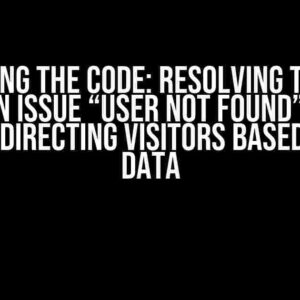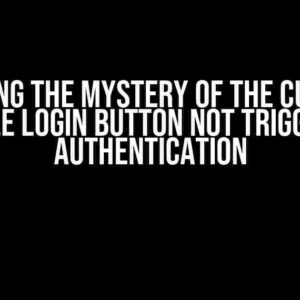In today’s fast-paced world of sports, real-time updates are crucial for providing an engaging user experience. Whether it’s a cricket match or a football game, fans want to stay updated on the latest scores and stats. As a React Native app developer, you might be wondering how to efficiently update live scores without bombarding your server with constant API calls. Fear not, dear developer, for we’ve got you covered!
Why Avoid Constant API Calls?
Before we dive into the solution, let’s understand why constant API calls are a bad idea:
- Server Overload**: Excessive API calls can put a significant strain on your server, leading to increased latency, reduced performance, and even crashes.
- Data Consumption**: Frequent API calls can result in high data consumption, which can be costly for both you and your users.
- Bad User Experience**: Constantly polling the server can lead to a poor user experience, with users facing delays, lag, or even app crashes.
Enter WebSockets and MQTT
To efficiently update live scores, we’ll explore two powerful technologies: WebSockets and MQTT (Message Queue Telemetry Transport). These protocols enable real-time communication between the client and server, allowing for efficient data exchange without constant API calls.
WebSockets
WebSockets provide a bi-directional, real-time communication channel between the client and server. This allows the server to push updates to the client, eliminating the need for constant polling. Here’s a high-level overview of how WebSockets work:
Client -> Establish WebSocket Connection -> Server Server -> Push Updates -> Client Client -> Receive Updates -> Render Live Scores
MQTT
MQTT is a lightweight, publish-subscribe-based messaging protocol that enables efficient, real-time communication between devices. It’s particularly useful for IoT and mobile applications. Here’s how MQTT works:
Client -> Subscribe to Topic -> MQTT Broker Server -> Publish Updates -> MQTT Broker MQTT Broker -> Push Updates -> Client Client -> Receive Updates -> Render Live Scores
Implementation in React Native
Now that we’ve covered the basics, let’s dive into implementing WebSockets and MQTT in React Native:
WebSockets with React Native
To use WebSockets in React Native, you’ll need to install the `react-native-websocket` library:
npm install react-native-websocket
Next, establish a WebSocket connection in your React Native app:
import WebSocket from 'react-native-websocket';
const ws = new WebSocket('ws://your-server.com/ws');
ws.onmessage = (event) => {
console.log(event.data);
// Update live scores here
};
MQTT with React Native
To use MQTT in React Native, you’ll need to install the `react-native-mqtt` library:
npm install react-native-mqtt
Next, establish an MQTT connection in your React Native app:
import { MQTTClient } from 'react-native-mqtt';
const client = new MQTTClient('mqtt://your-broker.com');
client.on('connect', () => {
console.log('Connected to MQTT broker');
client.subscribe('your/topic');
});
client.on('message', (topic, message) => {
console.log(topic, message);
// Update live scores here
});
Optimizations and Best Practices
While WebSockets and MQTT provide efficient real-time communication, it’s essential to optimize your implementation for the best results:
- Implement Debouncing**: To prevent excessive updates, implement debouncing to batch updates and reduce the frequency of API calls.
- Use Caching**: Implement caching to store frequently accessed data and reduce the load on your server.
- Optimize Server-Side Logic**: Ensure your server-side logic is optimized for performance, using efficient algorithms and database queries.
- Monitor Performance**: Regularly monitor your app’s performance, identifying bottlenecks and optimizing accordingly.
Conclusion
In conclusion, efficiently updating live scores in a React Native app without constant API calls requires a combination of technologies and best practices. By leveraging WebSockets and MQTT, you can provide a seamless, real-time experience for your users while reducing server load and data consumption. Remember to implement debouncing, caching, and optimize server-side logic to ensure a high-performing app.
| Technology | Advantages | Disadvantages |
|---|---|---|
| WebSockets | Bi-directional communication, real-time updates | Can be complex to implement, requires WebSocket support on the server |
| MQTT | Requires an MQTT broker, can be complex to set up |
By following this guide, you’ll be well on your way to creating a high-performing, real-time live score updating React Native app that delights your users while keeping your server happy.
Frequently Asked Question
Get ready to score big with efficient live score updates in your React Native app!
Q: How do I avoid constant API calls to update live scores in my React Native app?
A: Implement a caching mechanism, like Redis or Memcached, to store live scores temporarily. This way, your app can fetch scores from the cache instead of making repeated API calls. You can set a TTL (Time To Live) for the cached data to ensure freshness.
Q: Can I use WebSockets to update live scores in real-time?
A: Yes, you can! WebSockets enable bi-directional communication between the client and server, allowing for real-time updates. This approach eliminates the need for constant API calls, reducing the load on your server and improving the overall user experience.
Q: How can I optimize API calls for live score updates in my React Native app?
A: Implement API call debouncing or throttling to limit the frequency of requests. You can also use pagination or incremental loading to reduce the amount of data fetched in each API call. Additionally, consider using a CDN (Content Delivery Network) to reduce latency and improve response times.
Q: Can I use push notifications to update live scores in my React Native app?
A: Yes, you can! Use a push notification service like Firebase Cloud Messaging (FCM) or Apple Push Notification Service (APNs) to send score updates directly to users’ devices. This approach reduces the need for API calls and provides a seamless user experience.
Q: Are there any libraries or tools that can help me efficiently update live scores in my React Native app?
A: Yes, there are! Consider using libraries like React Query, Redux, or MobX to manage state and caching. You can also explore tools like Socket.io, Pusher, or Ably for real-time updates and WebSockets.






